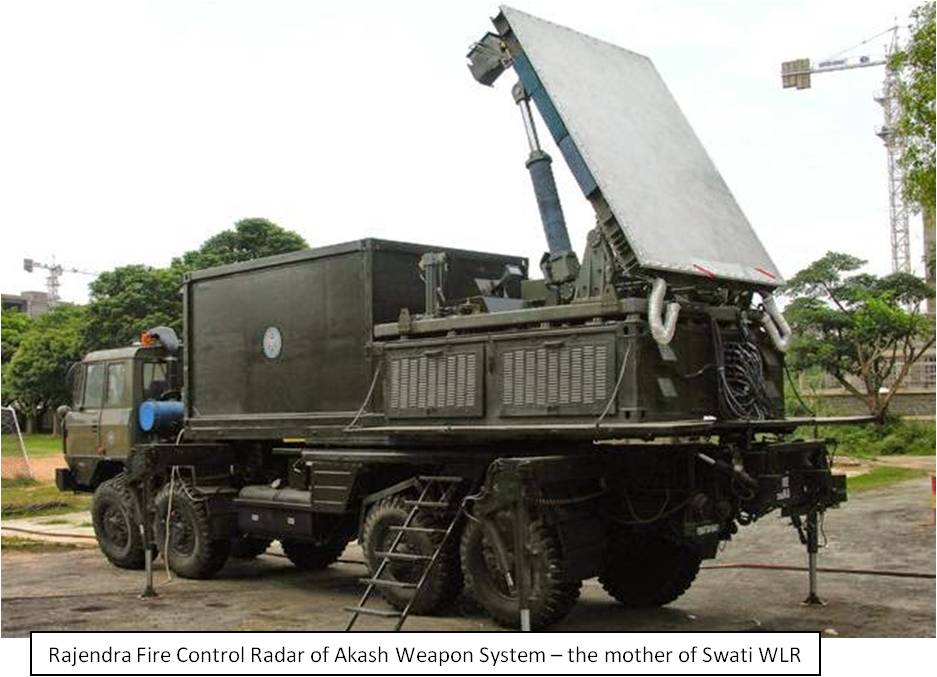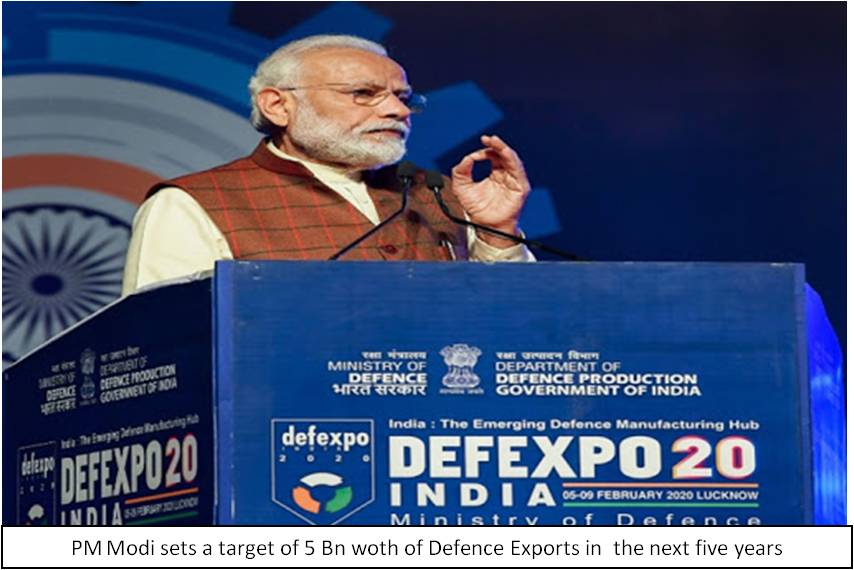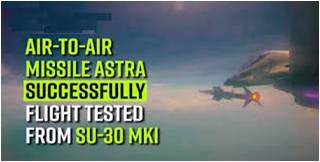On 01 Mar 2020, the media was abuzz with the breaking news of India having won a 40 million USD contract to supply four Swathi Weapon Locating Radars (WLR) to Armenia beating strong competitors like Russia and Poland1.
A contract of this magnitude is not only a ‘first of its sort’ development for the Indian defence sector and that too for a Defence Public Sector Undertaking (DPSU), but also, it signals many big things; maybe there is a possibility of kick-starting a new era, if the stakeholders are willing to catch the moment and build it in the years ahead.
It is certainly not a coincidence that in March 2020, India has appeared for the first time in the Defence Exporter’s List published by Stockholm International Peace Research Institute; albeit at a humble 23rd position. For the second largest arms importer of the world to turn a defence exporter is indeed a welcome development.
This article attempts to analyse why the Armenian success is indeed a big one and presents a viewpoint on how this ‘first’ can become a game-changer enabling the country to realise PM Modi’s dream of 5 billion USD defence exports in the next five years.
How has the Armenian success come about? – Building the Perspective.
While the state-run Defence Research and Development Organisation or the DRDO can be ticked for any number of lacunas like project delays, time and cost overruns, foreclosures, product non-realisations and more, there are some areas where it has achieved significant success and has made the country proud. In this list can be counted, surface-to-surface missiles, surface-to-air missiles, military radars and more.
Talking of military radars, it is stated that in the last five decades or so, the DRDO duly backed with other DPSUs, as well as, some private sector players has acquired considerable diversity and a degree of maturity in the design and manufacture of a whole spectrum of military radars. This, after suffering many a failures and surmounting many a challenges.
A brief overview of this fascinating journey is attempted.
The Journey of Military Radars
Electronics and Radar Establishment (LRDE) is the laboratory of the DRDO which is primarily responsible for research and development in radars and its related technologies. The pattern has been, that either pursuant to a user requirement or as a technology demonstration project, the radar design is evolved over the years by the DRDO/LRDE which is given to one of the production agency (PA) like Bharat Electronics Ltd ( BEL) or any other public or private player to realise the design into a product.
The journey of military radars by the LRDE is actually a panorama of the evolving user requirements driven by the changing face of technology over the years. This journey can be seen to evolve over five distinct eras. For the sake of identification, these can be named as early era, Akash era, (Ballistic Missile Defence) BMD era, miniature revolution, mission mode era and future era.
The early era refers to a period of late sixties and early seventies when the DRDO/LRDE came out with the Indra (acronym standing for Indian Doppler Radar). The initial version, called Indra 1, was a early generation two dimensional (2D) radar. A radar is called 2D when it provides only two outputs of the target under surveillance, i.e. azimuth and range. Indra was designed for searching and tracking low flying aircrafts, cruise missiles and attack helicopters up to a range of 90 km.
Incidentally, this radar proved to be a failure in the field and was to be replaced with its subsequent version, Indra-2 which featured better radar techniques like pulse compression, frequency agility and advanced signal processing (technicalities not explained further). This also proved to be only a marginal success. Notwithstanding minimal success of the Indra as a whole, this era provided the LRDE a valuable learning experience.
The Akash era is actually a spin off from the Integrated Guided Missile Development Programme of the DRDO which got sanctioned in 1982. It had the mandate to develop the Prithvi, Trishul, Akash and Nag guided missiles with Agni as a technology demonstrator.
Talking of Akash medium range SAM, while the realisation of the project got badly delayed incurring huge time and cost over-runs , two radars, one for long range early warning (called the Central Acquisition Radar or CAR) and the other for controlling the fire of missile (called the Rajendra Fire Control or FC radar) got developed, albeit badly delayed in time.

These two radars proved to be a foundation for the LRDE for branching out into the development of a large number of other radars.
Rajendra was developed as passive electronically scanned array radar or PESA for short. Electronic scanning is radar technique in which the radar beam formed by a large number of elements (arrays) in the antenna is electronically steered over the scanned sector without the physical movement of the antenna. Such a technique can be active or passive. In passive, all the antenna elements are connected to a single transmitter, in active, each element is connected to a separate trans-receiver module. Active is a better and state-of-the-art technique. Rajendra had a range of 80 km and had a capability to track 64 targets simultaneously.
During the testing and exploitation phases of this radar, it emerged that Rajendra was also capable of detecting artillery shells, unguided rockets and mortars. Detecting such targets is actually the job of a specialist radar called the Weapon Locating Radar or WLR. A typical WLR detects the fire as stated above and pinpoints its origin. This permits counter fire to be delivered in order to destroy the source from where the fire is coming.
It so happened that around this time (2002 or thereabout) the Artillery Directorate floated a requirement for an indigenous WLR. In the years that followed, brief R&D was undertaken to adapt Rajendra to the WLR role and a Rajendra variant called Swathi was developed in a short period of about two years. It is this Swathi radar that has been selected by Armenia.
On the other hand, Central Acquisition Radar (CAR) ushered the 3D era (a 3D radar gives three target inputs, namely, azimuth, range and altitude). From this radar came out three 3D radar variants; a 3D tactical control radar for the Army, Rohini for the Airforce and Revathi for the Navy.
The BMD era saw the development of Swordfish 3D Active Electronically Scanned Array (AESA) Radar with of range 600km.This was adapted from the Israeli Green Pine AESA radar. The miniature era refers to the development of a series of Low Level Light Weight Radars (LLLR) capable of deployment in high altitude and mountainous era. Under the mission mode era, LRDE was tasked to develop Fire Control (FC) and tactical control radar for Services. Currently LRDE is developing the Uttam AESA radar for Tejas Mk 2, AESA radar for Airborne Early Warning and Control System (AWACs), ASWINI 4D ( 3D + time dimension of target) and ARUDHRA 4D medium power radar for Airforce.
The future challenges for LRDE is to develop anti-stealth radars like the laser radar (LIDARS) and more. Further in the day, Quantum radars based on photon technology need to be developed (technicalities not explained further).
From the above journey, following points can be inferred
- LRDE has indeed matured over the last five decades or so into a strong radar house.
- Learning from failures, delays and building on successes, it has achieved a strong and a diverse radar base from early warning to fire control to BMD radars and innovations like LLLRs.
- Learning over the years, LRDE now has under its capability domain many of the contemporary radar technologies like AESA, 4D, pulse compression, frequency agility, clutter rejection, low probability of getting intercepted by enemy radars, high definition data signal processing, operability under hostile electronic warfare environment etc (technicalities of these techniques are not explained).
- While a decent progress has been achieved, there are many a challenges for the LRDE to address in the foreseeable future.
Turning focus on the Armenian deal, following points are stated
- The LRDE product Swathi having matured in the manner explained above became a strong contender in the Armenian bid.
- This PESA radar had an internationally comparable range from 2-40 km in detection of artillery shells, unguided rockets and mortar bombs.
- The radar featured most of the state-of-the-art radar technologies as mentioned above.
- It must have been therefore comparable to the other two contenders from Poland and Russia. May be the fact that swung the case in our favour was the cost of the equipment in Indian Rupees as compared to the others, though specific details of comparative costs are not known.
- It goes without saying that the other competitors were equally strong in their WLR products. Poland has LIWIEK Artillery Reconnaissance Radar System while Russia has multiple WLRs like AISTYONOK Counter Battery Radar from M/s Almaz Antey and Penicillin Counter Battery Radar from M/s Rostek etc.

Impact on Defence Exports
What does the Swathi deal mean in the context of Indian defence exports? Following points are made.
- Though India exports defence related equipment to 42 countries, the total value of its exports in dollar terms is minimal2. In 2018-19, the total exports amounted to USD 1.47Billion only3.
- India’s share presently amounts to only 0.2 percent of the global arms exports4.
- While the number of countries may be seemingly large (42), the major share is of a few countries only (Myanmar 46%, Sri Lanka 25%, Mauritius 14%).5 The other main countries being Azerbaijan, Seychelles, Estonia, Indonesia, and Guinea. 6
- The items which India exports mainly include cartridges, protective head gear, bullet proof jackets, bomb suppression blankets, night vision equipment, weapon spares, ammunition, grenades, communication equipment, parachutes, leather items, chemicals and explosives etc.
- In 2014, India’s defence exports were only about 2000 Crs, by 2018-2019 it reached the figure of about 17000 Crs. Prime Minister Narendra Modi speaking at the Def Expo 2020 has set a target of 5Bn (35000 Crs) worth of defence exports in the next five years.

How to Achieve the Dream Target – a viewpoint
How India is going to achieve the magic figure of 5Billion USD defence exports in next five years from now? A viewpoint is presented.
- It is felt that if the exports remain stuck to the current inventory, there is no way India will reach anywhere close to the above target figure.
- It is a big myth that there are not many ‘exportables’ from India. Consider the following: -
a. Our Astra 2A Beyond Visual Range Air-to-air Missile (BVRAAM) is a world class product complete with mid-course inertial guidance and terminal active radar homing. It rubs shoulders with ‘best in the world’ class of BVRAAMs (Meteor- France, AIM120 C/ D – USA, R 77-Russia). Not many countries have the capability to produce state-of-the-art BVRAAMs.

b. Brahmos supersonic cruise missile is a worthwhile exportable. Speaking at the International Maritime Defence Exhibition and Conference IMDEX 2019, Commodore Iyer of BrahMos Aerospace said that India is awaiting Govt approval to export first batch of BrahMos missiles to South East Asian and Gulf countries7.
c. As to the much reported likely resistance from Russia in export of BrahMos missiles, multiple open sources have lately reported the current stance of Russian officials about having no objection in the sale of BrahMos to friendly foreign countries8.

https://www.google.co.in/search?q=export+of+brahmos+supersonic+cruise+missile&tbm
d. The home grown Akash Missile system also has the potential of becoming a big export hit. Some countries from the ASEAN region and some Gulf countries (Malaysia, Thailand, Belarus, Vietnam, UAE etc) have evinced interest in Akash missile system9.
e. Indian Navy is a ship-building Navy. Our sea-going platforms designed and built indigenously by our shipyards have a tremendous export potential. We have already exported 11 fast track crafts and 2 Outshore Patrol Vessels (OPVs) to Mauritius and two OPVs to Sri Lanka10. There is a need to push up naval exports.

f. India very recently have joined the list of select nations that that can build their own guns and howitzers (Dhanush, Sharang, Advane Tactical Artillery Gun System or ATAGS). In times to come this holds a big export promise.
g. And finally, SWATI is just the first big success. India has a full radar house. There is a need to identify potential buyers and take part in open competitions fiercely and pro-actively. Our products are world-class.
h. Last November, there was a report quoting our Defence Minister saying many countries in South East Asian region have expressed interest and willingness to buy Tejas fighter aircraft. That of course can only happen if the HAL meets the time lines for realising platforms, as well as rises to meet domestic demand.
Be that as it may, the myth of ‘no worthwhile exportable’ stands addressed fully.
One more mind-set that needs to change is the ‘PSU alone syndrome’, meaning that if there will be defence exports, it will the DPSUs. The reality is different. Sample these figures:-
- Out of the total exports for 2018-19 amounting to Rs 10,500 Crs, the share of 8 DPSUs and 41 Ordnance Factories was a mere 800 Cr , i.e. 7.6%.
- Indian private defence manufacturing sector is coming of age slowly but surely. Some examples:-
a. In Mar 2019, TATA Power SED has signed a deal of 1200 Crs with the Ministry of Defence to supply 23 ship-borne 3D air surveillance radars to Indian Navy.

b. Our major players in private sector like L&T, Tata, Adani, Mahindra and more are today manufacturing a whole series of defence products for the domestic, as well as, the world market ( naval platforms, land systems, guns, missiles, aerospace products, C4ISR products, Radars, telemetry and tracking products… the list can go on.)
So what is the mantra for the magic figure of 5 Billion USD exports?
- Galvanise the entire inventory of ‘exportable’ through ‘aggressive and ‘professional’ marketing.
- THINK BIG.
End Notes
- “ India bags US $ 40 million defence deal to supply four radar systems to Armenia,” at www.timesnownews.com. Accessed on 14 Mar 2020.
- “India now exports defence products to 42 countries,” at www.livemint.com. Accessed on 15 Mar 2020.
- “India’s defence exports,” at www.claws.in. Accessed on 15 Mar 2020.
- “In a first, India now figures on arms exporters list, at www.economictimes.indiatimes.com. Accessed on 15 Mar 2020.
- “India seeks to shift from buying weapons to exporting them,” at www.dw.com. Accessed on 15 Mar 2020.
- 2 ibid. Accessed on 15 Mar 2020.
- “India set to export first batch of missiles to South East Asian and Gulf countries, “at www.economictimes.indiatimes.com. Accessed on 15 Mar 2020.
- “Make in India missiles big hit…,” at www.financial express.com. Accessed on 15 Mar 2020.
- Ibid. /li>
- “Which military equipment is exported by India?” at www.quora.com. Accessed on 15 Mar 2020.
(The paper is the author’s individual scholastic articulation. The author certifies that the article/paper is original in content, unpublished and it has not been submitted for publication/web upload elsewhere, and that the facts and figures quoted are duly referenced, as needed, and are believed to be correct). (The paper does not necessarily represent the organisational stance... More >>









Post new comment